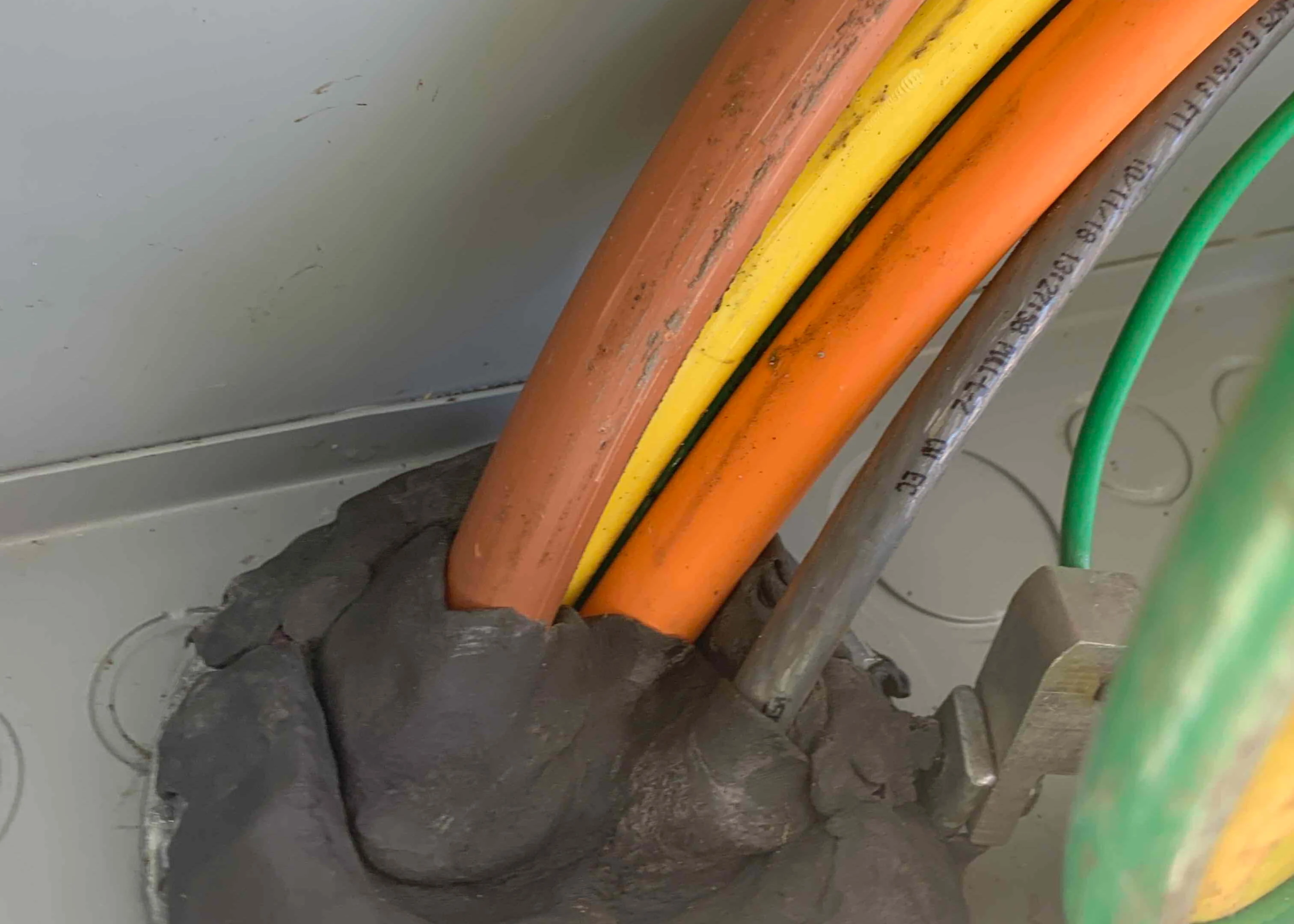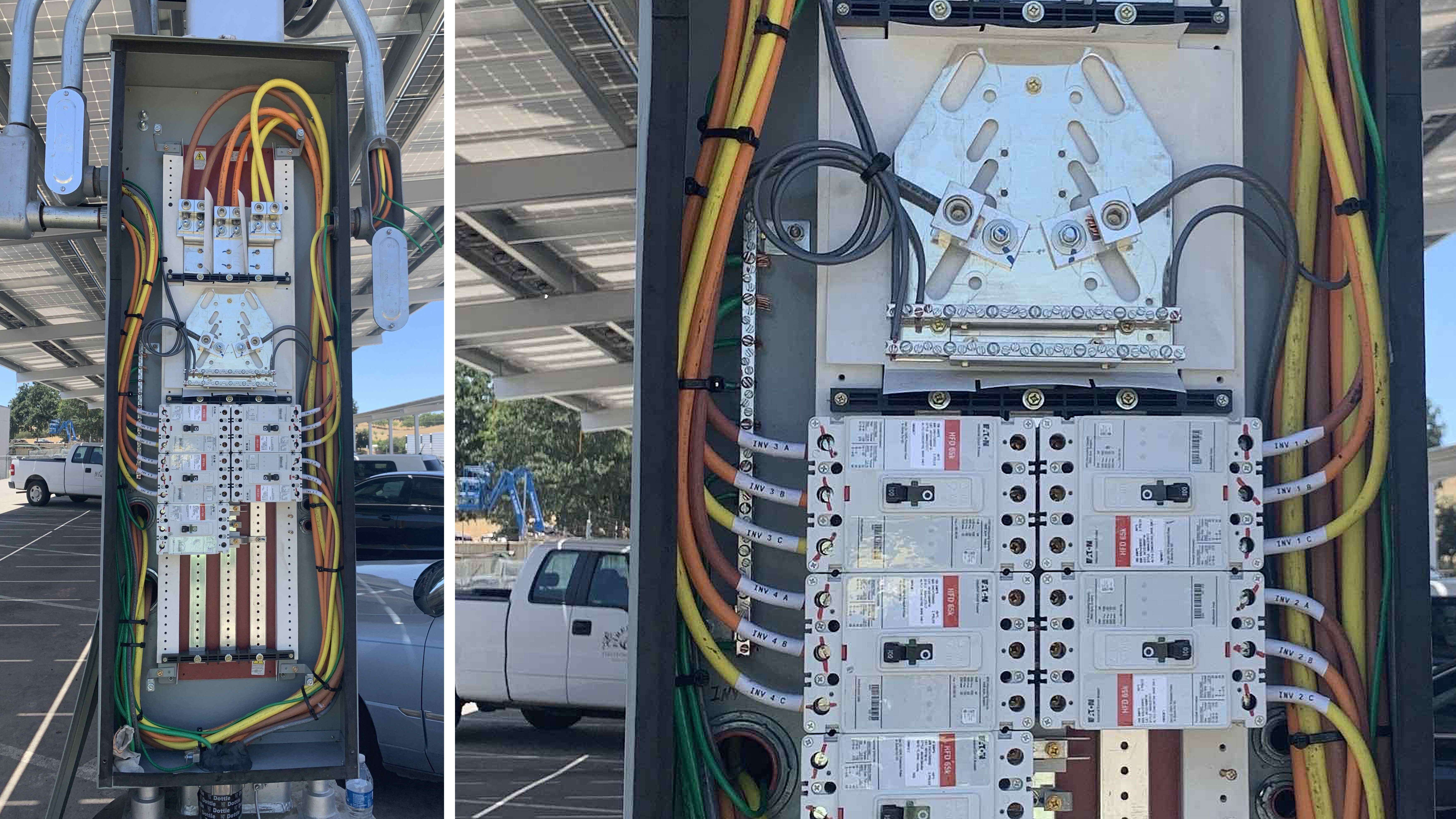What is a "Neutral" conductor?
**To an Engineer:**
A "neutral" is a current-carrying conductor that carries the unbalanced current in three-phase systems and is intentionally connected to the ground. In North America, the neutral is color-coded white or gray for easy identification (see image below). This conductor plays a crucial role in maintaining system stability and safety.
**To a Developer or Owner:**
A neutral means 4 wires instead of 3 — AKA increased cost!
As such, Pure Power is always on the lookout for ways to value engineer the Neutral conductor in our designs.
Engineers, electricians, and AHJs are accustomed to seeing a neutral conductor in three-phase circuits, and many engineers include them out of habit. But that doesn't need to be the case! Here are some pro tips for reducing (or eliminating) the cost of a neutral conductor from your solar project. Most importantly, the guidance provided here will ensure that your systems are future-proof, safe, and reliable.

**Inverter Manufacturer Considerations**
Because neutral requirements vary by manufacturer, it’s important to review the inverter's installation manual to determine whether a value engineering opportunity exists. Below are two options:
**Eliminating the Neutral:**
Some three-phase string inverters do not require a neutral conductor to operate. This is due to the fact that PV inverters typically output balanced three-phase power, and many allow the neutral to be omitted. For example, the installation manual for Chint Power Systems’ CPS SCA-series grid-tied PV inverter states: “The neutral conductor is optional.†Note that some OEMs specifically allow for the installation of a bonding jumper in place of a neutral conductor.
**Reducing Neutral Size (and Cost):**
For inverters that require a neutral, we rarely need a full-size neutral, and we can reduce it by several wire gauges. For example, per a Yaskawa Solectria inverter installation manual, its inverter uses the neutral for voltage sensing only, meaning it does not carry current and can be reduced in size.

**NEC Considerations**
Multiple sections in the NEC support the strategic elimination or downsizing of the neutral conductor. As a background, Section 110 specifically states that, “Listed or labeled equipment shall be installed and used in accordance with any instructions included in the listing or labeling.â€
**Eliminating the Neutral:**
The inverter installation manual is part of the product listing. If the OEM’s manual states that a neutral is optional, the product listing ensures that the neutral is not required by code.
**Reducing the Neutral Size (and Cost):**
In the event that an install manual or AHJ requires a neutral, provisions in Article 705 limit the size of the neutral conductor. According to NEC 2017, Section 705.95(B): “A conductor used solely for instrumentation, voltage detection, or phase detection and connected to a single-phase or 3-phase interactive inverter, shall be permitted to be sized at less than the ampacity of the other current-carrying conductors and shall be sized equal to or larger than the equipment grounding conductor.†In NEC 2020, this is now found in Section 705.28(C), which states, “a neutral used solely for instrumentation, voltage detection, or phase detection shall be permitted to be sized in accordance with 250.102.â€
**When NOT to Reduce or Eliminate the Neutral: Considerations for Adequacy and Future-Proofing**
It is important to consider long-term system adequacy and future O&M activities. We also want to be wary of AHJs during a final inspection who may insist on a neutral simply because that’s what they’re used to seeing.
We don’t always recommend eliminating neutrals in inverter AC collector panel boards. First, monitoring equipment and auxiliary power supplies are often powered from inverter panelboards and require a neutral reference. Second, when it comes time to swap out the inverters 10 years down the road, you may need a neutral reference for the replacement equipment. Third, if an AHJ insists at the final inspection that you install a neutral—even though the inverter doesn’t need one—the rework will likely be limited to the inverter output circuits.
In supply-side (line-side) interconnections, we often recommend maintaining a full-sized neutral at the point of interconnection (POI) based on a holistic cost-benefit analysis. Technically, these conductors are on the utility side of the service. Utilities often have requirements that don’t necessarily follow the NEC. The last thing you want is to find out at the final inspection that the utility requires a neutral, as this could lead to a costly shutdown. Given that this is usually a short run, the benefit of eliminating or downsizing the neutral is small compared to the potential costs of a last-minute change.
Central inverters provide little opportunity for neutral conductor value engineering, as these designs typically use prefabricated skid-based power stations.
**Conclusion**
Pure Power Engineering has many value engineering techniques, and reducing or eliminating neutral conductors is an unconventional but very feasible way to reduce the cost of the project. Where allowed by the manufacturer, Pure Power supports the strategic elimination of neutrals to individual inverters. Where allowed by Code, we support the strategic reduction of the neutral conductor size.
Looking for more pro tips for your C&I solar projects? Contact Pure Power Engineering to learn more about our value-engineered design and construction drawing services.
Filter Element,Stainless Steel Perforated Wire,Coated Stainless Steel Perforated Wire,Stainless Steel Mixing Element
Wuxi Zerru Technology Co., Ltd , https://www.zerruflow.com
